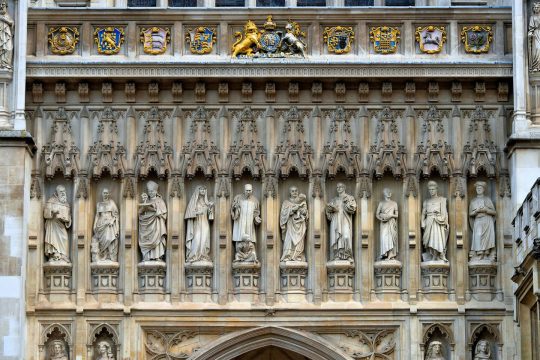#martin luther king III
Text
youtube
‘It is just not the full … depth and breadth of who he was’ — On the anniversary of Martin Luther King Jr.’s legendary ‘I Have a Dream’ speech, MLK III is sharing a deeper look into his father’s message
For more U.S. history, subscribe to NowThis News.
#mlk #speech #blackhistory #Politics #News #NowThis
#now this news#now this#solarpunk#USA#mlk#Martin Luther King Jr#Martin Luther King#Martin Luther King II#Martin Luther King III#i have a dream#civil rights movement#civil rights#speech#black history#african american history#Youtube
4 notes
·
View notes
Text

#black history is american history#blackexcellence365#black history#civil rights#civil rights movement#dr martin luther king jr#martin Luther King Sr#Martin Luther King III
4 notes
·
View notes
Text
0 notes
Photo



Loretta Devine with Martin Luther King III at the "Place of Weeping" premiere party (1986).
1K notes
·
View notes
Text





Reverend Martin Luther King Jr. with his son Martin Luther King III as he greets parishioners at Ebenezer Baptist Church in Atlanta on November 8, 1964.
Photos by Flip Schulke
96 notes
·
View notes
Photo

Louis I de Bourbon, Prince of Condé
Louis I de Bourbon (l. 1530-1569) was a descendant of Louis IX of France (r. 1226-1270) and founder of the House of Condé. The Prince of Condé proved his valor as a Huguenot military leader during the first three French Wars of Religion and died at the Battle of Jarnac in 1569.
Historical Context
The Protestant Reformation disrupted the religious status quo of the early 1500s in Europe when multitudes embraced the teachings of Martin Luther (l. 1483-1546) and John Calvin (l. 1509-1564). Protestantism made gains in France among the nobility and commoners alike in the first decades of the 16th century and encountered opposition from the Catholic Church. By the mid-16th century, Protestants who followed the teachings of Calvin were known as Huguenots or Calvinists. Marguerite de Navarre (l. 1492-1549) protected Protestant leaders and supported reform efforts in the Catholic Church. She was the sister of King Francis I of France (r. 1515-1547), the mother of Huguenot leader Queen Jeanne d'Albret (l. 1528-1572), and the grandmother of Henry of Navarre (l. 1553-1610), who converted to Catholicism in 1593 to become Henry IV of France, the first Bourbon king. The Protestant challenge to the status quo of the Catholic Church in France eventually led to a bloody struggle between Protestants and Catholics during the French Wars of Religion (1562-1598).
The royal houses of France were often in competition and made alliances according to political expediency. Political intrigues, assassinations, and executions were never far from religious questions. The House of Guise, a minor offshoot of the Dukes of Lorraine, was the most ardent archenemy of Protestants. The Bourbons were princes of royal blood, but distant from the throne and with modest wealth. They were also viewed with suspicion since Charles III de Bourbon had plotted with Henry VIII of England (r. 1509-1547) and Charles V, Holy Roman Emperor (r. 1519-1556) to take up arms against King Francis I. Positions among the high nobility became clearly established with the all-powerful Guises on one side and the Bourbons on the other.
Continue reading...
16 notes
·
View notes
Text
Please Share.
Row 1 Malcolm X, Martin Luther King Jr., Nat Turner, Martin Delany, Amos Wilson, Ida B. Wells
Row 2 Walter Rodney, Eusi Kwayana, Cuffy, Bussa, Sam Sharpe, Marcus Garvey, Cheikh Ahmadou Bamba
Row 3 Patrice Lumumba, Thomas Sankara, Steve Biko, Robert Sobukwe, Tavio Amorin, Cetshwayo
Row 4 Joseph Casely Hayford, Nzinga, Yaa Asantewaa, Taitu, Menelik II, Nehanda, Zumbi, Louis Delgrès
Row 5 Jose Correia Leite, Nanny, Jean-Jacques Dessalines, Elijah Muhammad, Queen Mother Moore, Harriet Tubman, Toussaint L’Ouverture, Makandal Daaga
Row 6 La Mulâtresse Solitude, Carter G. Woodson, William Leo Hansberry, Joseph Cinqué, Chancellor Williams, Jean Price-Mars, Samory Touré
Row 7 Asa G. Hilliard III, Joshua Nkomo, Julius Nyerere, Nana Olomu, W.E.B. Du Bois, Madison, Funmilayo Kuti, Paul Bogle

82 notes
·
View notes
Text
Martin Luther King III, his wife Arndrea Waters King and their daughter, Yolanda Renee King, made a rare visit to Memphis, Tennessee, on Thursday to mark the 56th anniversary of Dr. Martin Luther King Jr.’s assassination.
8 notes
·
View notes
Text

The three major components [of West's Christian upbringing] were a Christian ethic of love-informed service to others, ego-deflating humility about oneself owing to the precious yet fallible humanity of others, and politically engaged struggle for social betterment. This Christian outlook, as exemplified in our time by Martin Luther King, Jr., serves as the basis for my life vocation.
As a youth, I resonated with the sincere black militancy of Malcolm X, the defiant rage of the Black Panther Party, and the livid black theology of James Cone. Yet I did not fully agree with them. I always felt that they lacked the self-critical moment of humility I discerned in the grand example of Martin Luther King, Jr. Such humility has always been the benchmark of genuine love for, and gratitude to, ordinary people whose lives one is seeking to enhance. I witnessed this same kind of integrity and dignity in the humble attitude to black folk of my early heroes: the Godfather of Soul, James Brown; the legendary baseball player Willie Mays; my pastor, Rev. Willie P. Cooke (of Shiloh Baptist Church in Sacramento, California); my grandfather, Rev. C.L. West, of Metropolitan Baptist Church in Tulsa, Oklahoma; and my older brother, Clifton L. West III, to me an exemplary human being. In this way, Martin Luther King, Jr. has always been not so much a model to imitate, but the touchstone for personal inspiration, moral wisdom and existential insight. I heard him speak in person only once, when I was ten years old (1963), and I remember not his words, but his humble spirit and sense of urgency.
- Cornel West ("The Making of an American Radical Democrat of African Descent," from his Reader, pages 3-4)
#Martin Luther King#Cornel West#humility#love#service#Baptist#Christianity#human dignity#sarvodaya#gratitude#charity
9 notes
·
View notes
Text
Dr. Martin Luther King Jr. sharing a family dinner with his wife, Coretta Scott King, and their children - Yolanda, Bernice, Martin Luther King III, and the late Dexter Scott King, who passed away.
11 notes
·
View notes
Photo

One of the most revolutionary events in English history, the Dissolution of the Monasteries (sometimes referred to as the Suppression of the Monasteries), was the set of administrative and legal processes between 1536 and 1541, by which King Henry VIII disbanded monasteries, priories, convents and friaries in England, Wales and Ireland; in effect, sacking and looting them for their income, land and assets.
In order to grasp the impact of the Dissolution, it is necessary to understand that in the late 1530s there were nearly 900 religious houses in England (around 260 for monks, 300 for regular canons, 142 nunneries and 183 friaries). As such, some 12,000 people in total (4,000 monks, 3,000 canons, 3,000 friars and 2,000 nuns), were engaged in carrying out the functions of those religious houses. To put this in context: if the adult male population was 500,000, one adult man in fifty was in religious orders.
Henry was given authority by the Act of Supremacy, passed by Parliament in 1534, which made him Supreme Head of the Church in England, thus separating England from Papal authority; the King's position further strengthened by two Acts of Suppression (1536, and 1539). The policy was originally envisaged as increasing the regular income of the Crown, and much former monastic property was sold off in the 1540s to fund Henry's military campaigns; though by the time Henry VIII turned his mind to the business of monastic reform, royal action to suppress religious houses already had a history of more than 200 years.
The first case was that of the so-called, Alien Priories (some, merely agricultural estates with a single foreign monk in residence; others, rich foundations in their own right, such as Lewes Priory, which not only answered to Cluny of Paris, but sent money overseas, too).
Given the fairly constant state of war between England and France in the Late Middle Ages, the money sent to France by these Alien Houses was a matter of significant grievance in England. As such, the first sequestrations of the assets of the Alien Priories began under King Edward I, continued in the reign of Edward III, and still further continued by act of Parliament in 1414, under the authority of Henry V.
Money and land acquired by the Suppression greatly increased the royal purse, though some of it was also used to found educational foundations: most often setting up new colleges at both Oxford University and Cambridge University. Further instances, include: John Alcock (Bishop of Ely), acquiring the Benedictine nunnery of Saint Radegund to found Jesus College, Cambridge (1496), and William Waynflete (Bishop of Winchester), acquiring Selborne Priory in 1484 for Magdalen College, Oxford.
Dissolution of Monasteries was not an act exclusive to England. In 1521, Martin Luther published 'De votis monasticis' (On the monastic vows), a treatise declaring monastic life was not compatible with the true spirit of Christianity. In Sweden in 1527, King Gustavus Vasa secured an edict allowing him to confiscate any monastic lands he deemed necessary to increase royal revenues; and in Denmark in 1528, King Frederick I grabbed 15 of the houses of the wealthiest monasteries and convents.
King Henry VIII's chief political and legal architect in the Dissolutions was Thomas Cromwell (also instrumental in monastic suppressions instigated by Cardinal Wolsey); though Henry is also said to have been influenced by Desiderius Erasmus and Thomas More; both of whom ridiculed such monastic practices as repetitive formal religion and superstitious pilgrimages for the veneration of relics.
Most parish churches had been endowed with Chantries (each maintaining a priest to say mass for the souls of their donors), and these continued until they too were dissolved under the Chantries Act (of 1547), by Henry VIII's son, Edward VI.
Along with the destruction of the monasteries, the related destruction of the monastic libraries is said to have been on a catastrophic scale: Worcester Priory, for example (now Worcester Cathedral), had 600 books at the time of the dissolution; only six of them are known to have survived intact to the present day.
Similarly, the Abbey of the Augustinian Friars at York, had a library of 646 volumes, of which only three are known to have survived.
48 notes
·
View notes
Text
youtube
‘If you don’t understand the importance of this election, then you are definitely asleep and you need to be awakened’ — Martin Luther King III is honoring and preserving his father’s legacy by committing to protecting voting rights in the U.S.
For more U.S. news and politics, subscribe to NowThis News.
#MLK #Voting #Midterms #Politics #News #NowThis
#now this news#now this#solarpunk#mlk#Martin Luther King III#Martin Luther King II#Martin Luther King#voting#USA#politics#voting rights#Youtube
3 notes
·
View notes
Photo


Quid est martyrium? Mortem pati pro Christo. Quid est Christianum? Christum sequi*
- St. Augustine
What is martyrdom? To suffer death for Christ. What is a Christian? To follow Christ.*
After the restoration of the western towers of the Abbey had been completed in 1995, it was decided to fill the 10 gothic niches above the west doorway with statues. The lower part of the towers date from the 15th century and the tops of the towers were completed in 1745. The niches never had statues, although this was obviously the plan of decoration.
It was decided to use the ten niches not just to commemorate saints or worthy figures from the past. So instead of traditional figures of kings or saints, the abbey decided that martyrs of the 20th century should be remembered. The West entrance was to proclaim a message of which too few people are aware: the 20th century was a century of Christian martyrdom. Although the statues are of individual martyrs they are intended to represent all those others who have died (and continue to die) in similar circumstances of oppression and persecution. Their statues were drawn from every continent and many Christian denominations.
Four sculptors completed the statues, carved from French Richemont limestone. The Archbishop of Canterbury, George Carey, unveiled the statues in July 1998 at a service attended by HM Queen Elizabeth II.

The ten Christian modern martyrs are (from left to right):
Maximilian Kolbe: a Catholic priest who helped Jews in Poland and who died in Auschwitz in 1941 after offering to take the place of a condemned man.
Manche Masemola: a 16-year-old girl from South Africa who was killed by her parents in 1928 when she converted to Christianity.
Janani Luwum: the Archbishop of Uganda who was murdered on the orders of Idi Amin in 1977.
Grand Duchess Elizabeth Feodorovna: a member of the Russian Imperial family (by marriage) who founded a convent but was murdered by the Bolsheviks during the Russian Revolution.
Martin Luther King: the American civil rights campaigner who was murdered in 1969.
Oscar Romero: the Archbishop of San Salvador, murdered by a death squad in 1980.
Dietrich Bonhoeffer: a Lutheran theologian who was implicated in the bomb plot against Adolf Hitler and executed in 1945.
Esther John: a Pakistani nurse and Christian evangelist who was murdered by a Muslim relative in 1960.
Lucian Tapledi: an Anglican in New Guinea who was killed by invading Japanese troops in 1942.
Wang Zhiming: a Christian pastor in China who was executed in 1973 during the Cultural Revolution.
In June 1953, during Her Late Majesty Queen Elizabeth II’s coronation, she entered through the west door of London’s Westminster Abbey. During her arrival, she was received by massed choirs singing “I was glad when they said unto me, we will go into the house of the Lord” (Psalm 122, 1-3,6, 7.)
On 6 May, King Charles III and Queen Consort Camilla will be crowned at Westminster Abbey. For many, this will be the first coronation they have ever seen. The ceremony will follow a pattern laid out in the Liber Regalis, kept at Westminster Abbey and which has informed the pattern of coronations since the 14th century. The service which will see the Coronation of King Charles and Queen Camilla will include the same elements as the historic coronations which have gone before and everything starts with their entry to the Abbey. This means King Charles III will enter the Abbey through the West door and under the statues of these 10 Christian modern martyrs.

For King Charles III it will have a particular personal resonance as he will walk under the soulful gaze of his great-great aunt through his father’s side (the late Prince Phillip, Duke of Edinburgh), Grand Duchess Elizabeth Feodorovna.
Elizabeth of Hesse-Darmstadt was born on 1 November 1864. Her mother died when she was a child, and she came to England to live with her grandmother, Queen Victoria. Her childhood was Lutheran and her adolescence was Anglican. Elizabeth married Grand Duke Sergei Alexandrovich, the fifth son of Tsar Alexander II of Russia in 1884, and joined the Orthodox Church in 1891.
When her husband was assassinated in 1905, she gave away all her jewellery, sold her most luxurious possessions, and opened the Martha and Mary home in Moscow. Elizabeth and 17 of her companions formally became nuns in 1909. They soon opened a hospital and began other philanthropic works.
The Tsarist state collapsed in March 1917, and the Bolsheviks seized power in October 1917. Elizabeth was arrested with two sisters from her convent on 7 May 1918, and transported across country to Perm, then to Ekatarinburg, and finally to Alapaevsk. On 17 July, the Tsar and his family were shot dead. During the following night, Elizabeth, Sister Varvara, and members of the royal family were murdered in a mineshaft. Elizabeth was recognised as a saint by the Russian Orthodox Church Abroad in 1984 and by the Moscow Patriarchate in 1992.

Had there been more than ten niches available, there would have been other candidates available for inclusion in Westminster Abbey. As it stands, this memorial makes a powerful statement about the fact that people are still dying for their Christian beliefs in the present age. Although most cathedrals only seem to commemorate people who are long-dead and long-forgotten, Westminster Abbey bucked the trend in a dramatic and highly poignant way.
#st augustine#augustine#quote#westminster abbey#martyrs#martyrdom#christianity#west door#modern martyrs#statues#coronation#king charles III#monarchy#cathedral#church#faith#heritage#custom#tradition#christian#society#britain#england
51 notes
·
View notes
Text
Something for Martin Luther King Day
On Sunday 04 November 1956, Dr. Martin Luther King Jr. delivered a sermon at the Dexter Avenue Baptist Church in Montgomery, Alabama. The inspiration for this homily was an imagined Epistle which the Apostle Paul sent to Americans.
Here is an excerpt from that sermon dealing with economic justice.

Paul/MLK had criticisms of capitalism though he was no fan of communism with its consequent totalitarianism.
This sermon appears as Chapter Fourteen in the book Strength to Love.
It also appears in The Papers of Martin Luther King, Jr., Volume III: Birth of a New Age under the title "Paul's Letter to American Christians".
Dr. King would certainly have had something to say about this recent report.
World's richest five men double wealth — Oxfam
#martin luther king day#martin luther king jr.#sermon#paul's letter to american christians#capitalism#superfluous and inordinate wealth#the filthy rich#economic inequality#poverty#economic justice#democracy
7 notes
·
View notes
Text
StoryCorps: Leesburg Stockade Girls Recall Time As Civil Rights-Era Prisoners : NPR

Taken in 2016, (left to right) Emmarene Kaigler-Streeter, Carol Barner-Seay, Shirley Green-Reese and Diane Bowens stand outside the stockade building in Leesburg, Ga., where they were jailed in 1963.
The day Martin Luther King Jr. gave his landmark "I Have a Dream" speech in August 1963, a lesser known moment in civil rights history was unfolding in southern Georgia.
More than a dozen African-American girls, ages 12 to 15, were being held in a small, Civil War-era stockade set up by law enforcement in Leesburg, Ga., as a makeshift jail.
Though they were never charged with a crime, the girls had been arrested for challenging segregation in demonstrations in nearby Americus, Ga. For about two months, the girls slept on concrete floors; there was no working toilet or shower. There were minimal food and water deliveries each day.
"The place was worse than filthy," recalled Carol Barner-Seay at StoryCorps in 2016.
Barner-Seay, who's now 68, had been imprisoned there along with Shirley Green-Reese, Diane Bowens and Emmarene Kaigler-Streeter. At StoryCorps, the four women recounted their time together in the stockade.
"Being in a place like that, I didn't feel like we was human," Shirley Green-Reese, now 70, said.

In August 1963, African-American girls were held in a Georgia stockade after being arrested for demonstrating segregation. Left to right: Melinda Jones Williams (13), Laura Ruff Saunders (13), Mattie Crittenden Reese, Pearl Brown, Carol Barner Seay (12), Annie Ragin Laster (14), Willie Smith Davis (15), Shirley Green (14), and Billie Jo Thornton Allen (13). Sitting on the floor: Verna Hollis (15).
Bowens, who's 68, was especially concerned about one of the girls, Verna Hollis. "I was scared Verna was going to die. If she ate, it would just come right back up."
Hollis didn't know that she was pregnant at the time. "We didn't know because we were children," Green-Reese said.
Looking back, Barner-Seay remembered Hollis' strength. "If she complained to anybody, it was under her breath to God, but we never heard it," she said.
Hollis' son, Joseph Jones III, is now 54 years old. A year before Hollis died in 2017, she recorded a StoryCorps interview with him, reflecting on those months she'd been jailed as a teen.
"I was scared and mad that you could treat a human being like they treated us," said Hollis, then 68. "We both could have died in there."
Jones told his mom he, too, was inspired by her strength. "I'm proud of that, and I try to live from that," he said.
'This is us'
The Student Nonviolent Coordinating Committee eventually learned where the girls were and sent photographer Danny Lyon to the stockade to photograph them. When Lyon's photographs documenting their squalid living conditions were published, the girls were released.
When Green-Reese went back home, she says she didn't feel welcomed. "When we got out of that stockade, my classmates and my teachers never asked me where I was coming from," she said. "I felt like I didn't fit in, so after high school, I left the area and moved forward."
She took a job with a library in Savannah, Ga. In the archives at work one day, she saw for the first time one of Lyon's photos of the imprisoned girls, including herself, behind bars at the stockade.
"I said, 'This is us.' "
But Green-Reese didn't share the photo with her coworkers. "I didn't want them to know I was in that jail," she said.
It wasn't until 2015 that the women who had been imprisoned in the stockade got together to discuss their time there.
Bowens says she doesn't do well in confined spaces. "Today, when I got in this elevator, I was about to have a heart attack," she said in 2016. "I just don't want to be closed in, and I don't want to be in the dark."
In the StoryCorps podcast, Emmarene Kaigler-Streeter shared what she'd tell the men who locked her up: that she feels sorry for them. "Because they were not looking at us as children," she said. "They were not looking in the hearts. All they were looking at was the fact that we were black."
Green-Reese says the experience is in her "fibers."
"And I still don't like to talk about it," she said, "but this is a part of all of our lives forever."
#They Were Jailed In Squalor For Protesting Segregation#leesburg stockade#civil rights activists#Black Lives Matter#Black History Matters#georgia#americus georgia#systemic racism#falsely detained#adultification
11 notes
·
View notes
Text
Opinion: Here’s who should have won Time’s ‘Person of the Year’
Updated 10:07 AM EST December 8, 2023
Editor’s Note: Holly Thomas is a writer and editor based in London. She is morning editor at Katie Couric Media. She tweets @HolstaT. The opinions expressed in this commentary are solely those of the author. View more opinion on CNN.
Taylor Swift is Time’s 2023 “Person of the Year,” and apparently, I’m the only millennial woman on Earth who doesn’t feel seen.
OK, that’s an exaggeration. But since the announcement, it’s felt like a specific corner of Spotify Wrapped got bitten by a radioactive spider and attained superhuman powers.
I’m happy for her, I guess. I’ve nothing against a seemingly pleasant person having a lovely time, and there’s no denying she’s had a stellar year. As Time’s feature details, Swift’s now made more No. 1 albums than any other woman in history, has world leaders begging her to tour their nations and has reportedly become a billionaire. “Swift is the rare person who is both the writer and hero of her own story,” says Time. That’s great. I just don’t find that story especially compelling.
Ugh, I feel so mean. I’m well aware this will upset people, and I’d never want to rob anyone else of their joy. We’ve all had conversations with people who simply don’t “get” the music or TV we’re into. Typically, my response to such complaints is, “That’s OK, it wasn’t made for you.” But part of what’s making me so squirmy is the sense that Swift, and the stories she tells through her music, are basically aimed at me. If you lined me up alongside everyone I know who’s currently rhapsodizing over her success, I’d be indistinguishable. But I’m not biting. That’s not because I think there’s anything wrong with her. If anything, my choice for Time “Person of the Year” would be more problematic.
Historically, the title’s recipient has often been a provocateur. The idea isn’t necessarily that the “best” person wins — though that’s certainly been the case at times — it’s that the person who’s had the most influence, for “good or ill” over the previous 12 months, is recognized. Previous winners have included Adolf Hitler, Joseph Stalin, Greta Thunberg, Martin Luther King Jr. and Elon Musk. This year’s shortlist included the Hollywood strikers, Chinese President Xi Jinping, Barbie, Federal Reserve Chair Jerome Powell, Russian President Vladimir Putin, the Trump prosecutors, King Charles III and OpenAI CEO Sam Altman. Time ultimately named Altman CEO of the year. I think he should have taken the top title.
In case he hasn’t yet crossed your radar, Altman is the 38-year-old chief executive of OpenAI, the tech startup responsible for creating ChatGPT. ChatGPT is a revolutionary generative artificial intelligence chatbot that was launched in November 2022. It’s since astounded observers by passing exams at law and business schools, writing effective job applications and computer code and composing part of a political speech for Israel’s president.
The implications of that tech alone are both miraculous and terrifying, particularly given the potential for disinformation campaigns to influence the presidential election in 2024. Many companies besides OpenAI are vying for a bite of the lucrative AI market, competing to develop newer, evermore sophisticated systems. Though the Biden administration recently introduced legislation to regulate the exploding industry, the pace of development is so rapid that it’s often difficult for governments to keep up.
The mysteriousness and speed of the AI race were evidenced in November, when, less than a year after ChatGPT’s launch, Altman was fired suddenly by his company’s board. Just days later, Microsoft, OpenAI’s biggest stakeholder, announced it was hiring Altman to head up a new AI team. This prompted a mass revolt among OpenAI’s staff, almost all of whom threatened to quit unless Altman was rehired. Within days, he was, and the board that’d fired him was replaced.
The circumstances around both Altman’s dismissal and rehiring were remarkably murky. In their statement announcing his sacking, the original board accused Altman of “being not consistently candid in his communications,” but didn’t elaborate on what that meant. Even more worrying, Altman’s return and the restructuring of OpenAI have been characterized as a victory for AI “accelerationists” — those who believe that the tech should be developed as fast as possible, unconstrained by safety concerns. The episode proved that Altman wasn’t just capable of spearheading potentially the most significant invention of the 21st century so far. He was able to upend the ecosystem that created it within days.
This, I think, is what’s lacking in Swift as Time “Person of the Year.” Her predominance in the entertainment industry is undeniable, but her story is essentially one of becoming mega-successful within an existing framework. As she told Time, we live in a patriarchal society fueled by money, so “feminine ideas becoming lucrative means that more female art will get made.” It’s not a million miles from, “If you can’t beat ‘em, join ‘em.”
The impression that no one’s anticipating any controversy from Swift anytime soon was reinforced in November when Gannett, America’s biggest newspaper chain, hired the first-ever Swift correspondent. The journalist in question, 35-year-old Bryan West, is a self-avowed fan. Odd though some might find it to hire someone with such an obvious bias, West has argued that it’s no different than “being a sports journalist who’s a fan of the home team.” Whether you agree with that comparison or not, it’s undeniably in his professional interests for Swift to remain popular and relevant — and it seems unlikely that the appetite for stories about her will wane anytime soon.
This is why Altman, not Swift, ought to have been Time’s “Person of the Year.” His impact on the world could be exponentially more consequential, but not nearly enough people are aware of him or the implications of his technology. Every move Swift makes, however incidental, is the subject of feverish intrigue and speculation. Over in San Francisco, Altman is making moves that could change the fate of the world. And until a month ago, most of us were unaware he even existed.
© 2023 Cable News Network. A Warner Bros. Discovery Company. All Rights Reserved.
CNN Sans ™ & © 2016 Cable News Network.
I don’t know about Sam Altman but I agree, it shouldn’t have been Taylor. She’s just a musician who is everywhere and in everything.
At least I’ve seen good and bad on the AI front. Good and bad from Hollywood and etc. Taylor? Just everyone praising her? For what? Her singing? Her tours? (Where people died but while they bitched at males for things out of their control, Taylor is praised for it….doesn’t make sense to me.) Her making us spend money we then complain about?
She’s not that good of a singer. I don’t like her anymore. She’s the same as any other singer out there.
16 notes
·
View notes